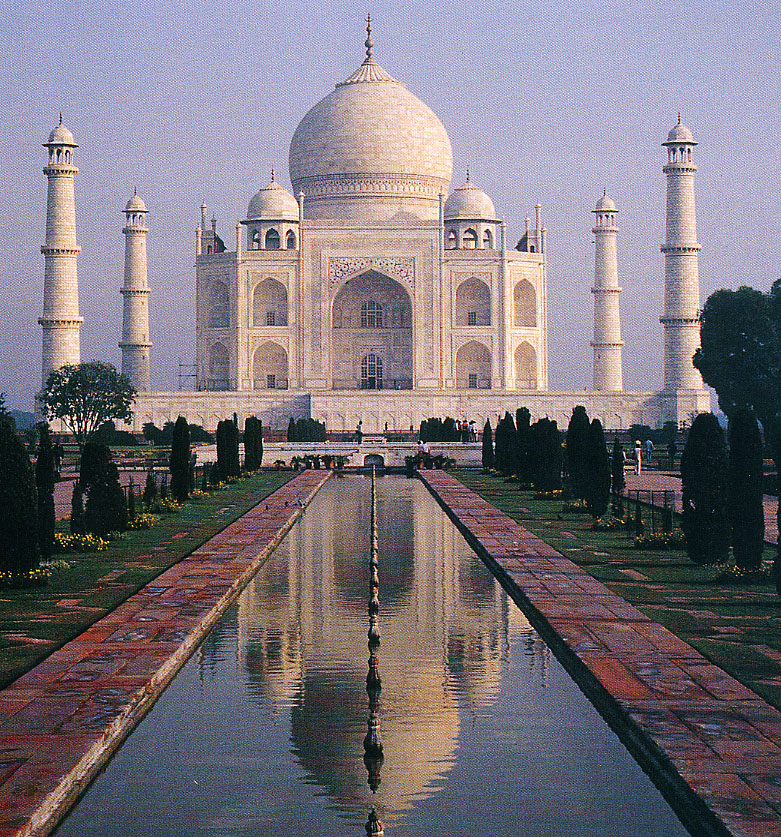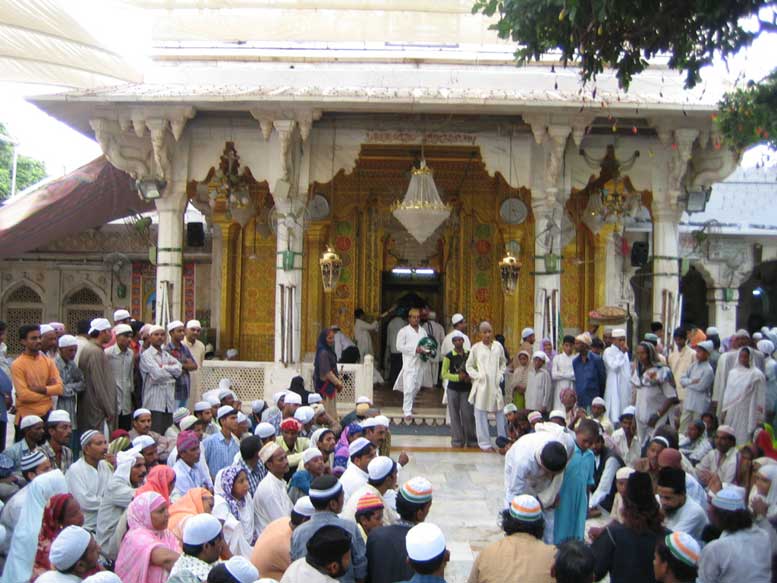Jaipur is the chief city of Rajasthan (about the size of the Twin Cities). It is also the capital of marble-quarrying.
And outside is the Amber Fort, so called for its pink stone walls (go figure).
Here the queue is extremely long to ride the elephants, so I didn’t. Seeing them was enough. I sat an talked to a wonderfully interesting woman in our group, who had been on the Kent State student paper in 1970, survived the massacre, but not without a touch of PTSD.) Then she worked for a Catholic Worker house in Cleveland, knew Dorothy Day, and almost became a carmelite nun. Now she is in charge of Catholic Charities for the Achdiocese. 
Then, on to Agra, The capital of Shah Jahan, who built the Taj Mahal as a shrine to his favorite wife, Mumtaz Mahal. Words – even pictures – fail.
I ran the wheelchair scam and got pushed all over the very large compound by a pusher whom I paid very well. I was able to get some nice trinkets just outside our hotel. Agra is famous for its marble-inlay work (the kind that covers the entire interior of the Taj Mahal). Flakes of semi-precious stone are lnlaid into white marble in floral patterns of exquisite beauty.
Many of the Indian railway station, it seem, are not right in the city they serve, but out of town a way. We drove to Tundla Junction, outside Agra, but not at the appointed hour. The traian was teo, then three, then three hours late. I strewtched out on the big back seat of the bus for a snooze. I woke after a really vivid dream to see elecrtic pinwheels out the window and a brass band playing. It was one of the thousands of weddings that night – the last night of good astrological auspices.
Everyone was gaily dressed in their loudest colors. And ieryone danced as the procession moved slowly toward the hotel gate The bride was inside, and we never saw her. (Sometimes brides don’t even appear at their own weddings!) But the groom rode a horse. He wore fancy clothes and a pearl veil over his face. In froint of him rode a golden-clad, beturbaned boy, who I think was supposed to represent the mahout, for the steed is supposed to be an elephant (most don’t go to that extreme anymore). It was all like a Fellini movie.
The flavor of Eurpopean film continued at tundla Junction – this time morer like Night and Fog, though. Our group oleaders had bailed. The woman got terribly ill and her husband stayed with her. The treain got later. We climbed another mountainous pedestrian overpass to get to the middle quay. Then we waited. And waited. Night wore on. It got colder. The boys (really, they seemed to be about 18) who schlepped our luggage squatted patiently in their rag-tops and shawls. Train after train pulled in – and out – belching steam in the gloom. It got so cold that I put on one of my gift shawls.
The train finally arrived five hours late. The delay was due to fog, which is fairly common this time of year, I guess. The second-class couchette was a relief after the concrete benches. We checked into the hotel in Vanarasi, overlooking the Ganges, in time for some serious internet action. (Despite the extremely spotty server performance, I have managed to keep up with my classes pretty well.)
Ablutions at the Ghats (banks) of the Goddess-river, Ganges in Vanarasi
Since the rest of the program called for another train-ride (and the good chance of another two-story stair climb), I decided that I had reached my discomfort threshold. I flew back to Delhi the next day, having found a reliable travel agent right next to the hotel. The car sent by the hotel got lose. Had to stolp for directions.l But It finally delivered me to OLD Delhi. Owing to hotel crowding, I switched hotels a couple of times, and I write this from a comfortable, modern country villa very close to the airport, which I need because I have to be there by 6:00 am for the flight to Singapore. There I have booked another airport hotel, as I have at Narita, to break up the return flight, so that I might not be a complete zombie, when I get back to California.
Before I left, I accepted the offer to serve as “content expert” for the development of a course in World religion for Argosy. I really don’t feel qualified, but everyone else assures me that I am, and so – what the hell? – it pays well. I have a feeling it is going to be quite a lot of work (they said ten hours a week for twelve weeks) beginning as soon as I get back. We’ll see.



















